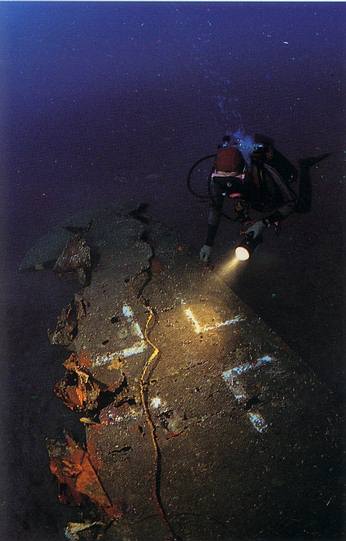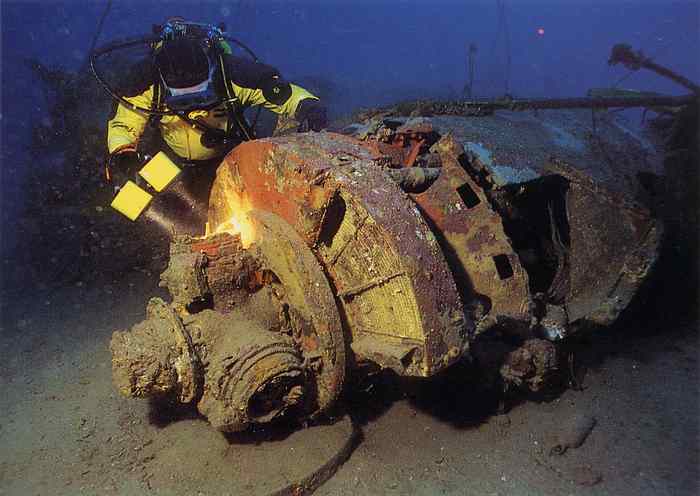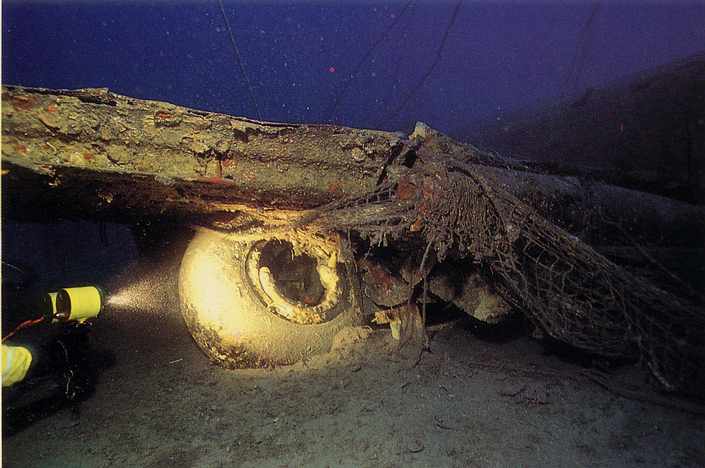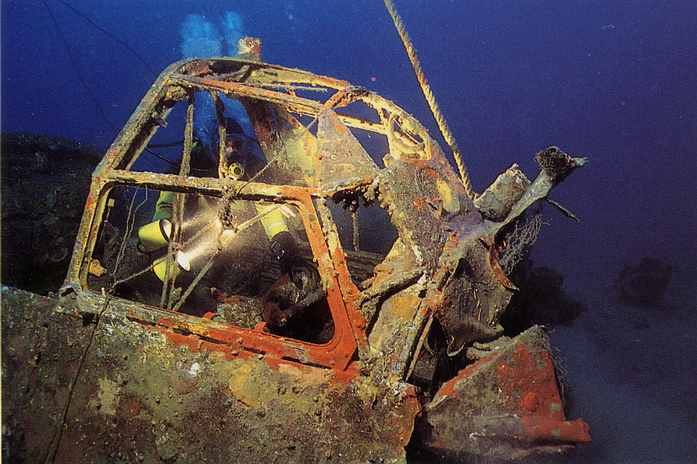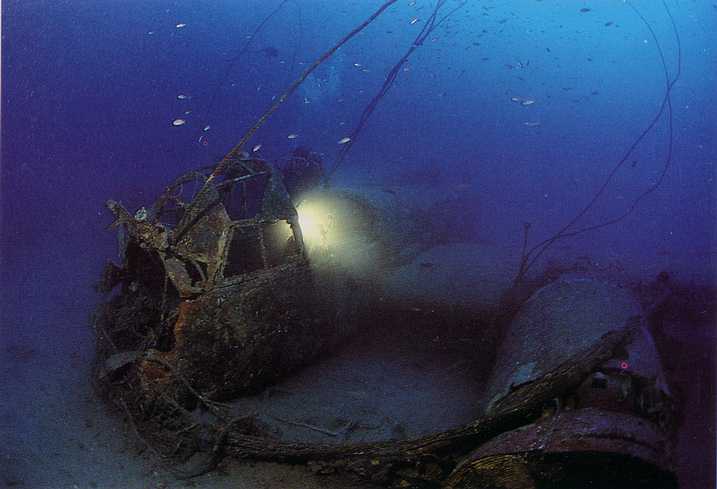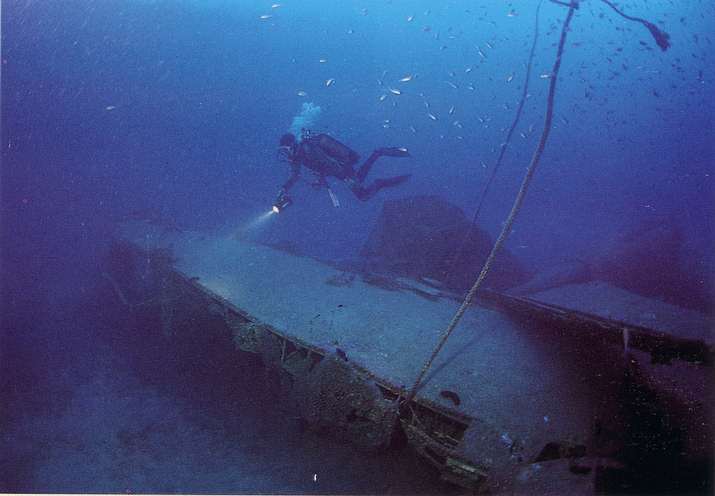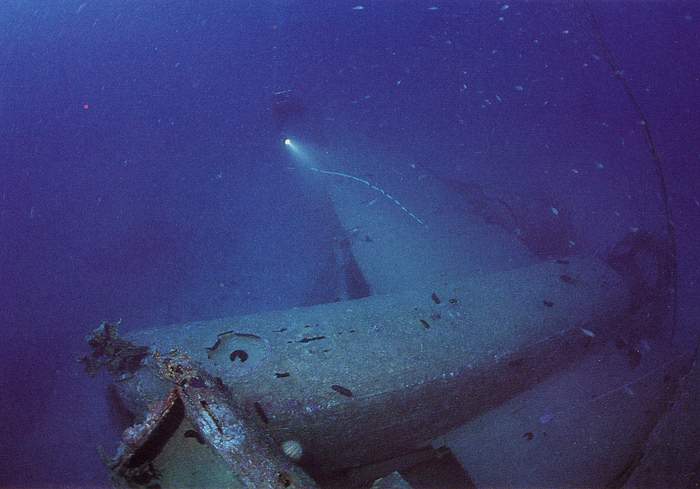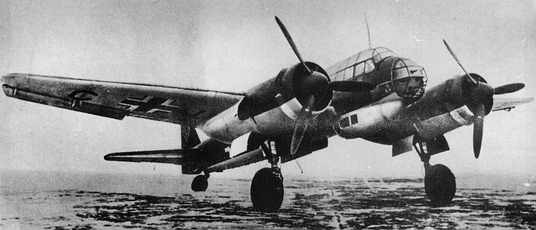

The wreck of this twin-engined aircraft is lying approximately a kilometre
and a half from the island of Le Frioul at a depth of around 53 meters.
She is resting on sand as neatly as if she had been pared in a hangar; the tail
is bent at an angle of 45 degrees, but all the other structural elements of the
plane are completely intact. The bomber is 14.5 meters long and has a
wingspan of a little under 20 meters. The glazed nose is buckled, probably
as a result of the impact with the sea. Parts of the Junker Ju. 88, the
tail and the left-hand wing, are wrapped in a wide-mesh net. When you
begin your dive to this aircraft and are descending through the blue waters, you
should pause at a depth of around tem meters. From this point you will be
able to admire the wreck in its entirety. As the bomber is small, in
contrast with other deep wrecks you will have time to examine everything.
Among the most interesting elements are the engines, which although the lack
their propellers, really are impressive. The Junker Ju. 88's were
generally equipped with Jumo 211 B, 1200 hp engines, or 213 E units developing
1725 hp. This is another discovery by our French diving collegues and was
discovered by Mr Luc Vanrell.
